THE KEY OF CHOICE
We dast not kid ourselves about the importance of air quality. Our Earthly survival—and progressively that of our children and their children and their children's children into all of the future—ultimately depends on clean air.
Clean air is critically important to life on Earth because air is the interactive thread connecting soil, water, biodiversity, spirituality, human population density, sunlight, and climate with one another. As such, air—clean air—is the breathe of the world and, as such, breathes life and vitality into its being.
When cold, clean air and clean water come together, they can form some of the most beautiful patterns.
Yet we, with our myriad data bits and seemingly vast knowledge, assume that air, soil, water, sunlight, biodiversity, and climate are economically constant entities, whose values are unchanging. We therefore omit them from consideration in our economic models, our planning models, and even our thinking. The fallacy in this notion is that no ecological variable—inculding air, soil, water, sunlight, biodiversity, and climate—can be converted into an illusionary economic externality without dire ecological consequences. Biodiversity, on the other hand, is simply discounted when its consideration interferes with monetary profits. As for spirituality, modern society has long since swept it under the economic carpet. Then there's the nagging problem of human population, which we talk about and worry about. In the end, however, we give only lip service to the one thing that can control it—total, real gender equality.
Finally, we—the human component of the world—must understand and accept that each of these entities is an interactive variable in the tapestry of the natural/cultural world that must be accounted for if society is to become a sustainable partner with its environment.
In today's world, human consciousness can be likened to the key in the Chinese proverb: "To every man is given the key to the gates of heaven, and the same key opens the gates of hell." In this case, those with enlightened awareness who act to repair and protect our environmental quality for all generations turn the key toward heaven, whereas those who steadfastly remain committed to "informed denial" in order to protect their economic status quo turn the key increasingly to hell on Earth for all generations. To enliven our understanding of the power of the key, let's briefly examine each entity individually and then in the collective of their relationship.
AIR: THE BREATH OF LIFE—AND OF DEATH
by
Chris Maser
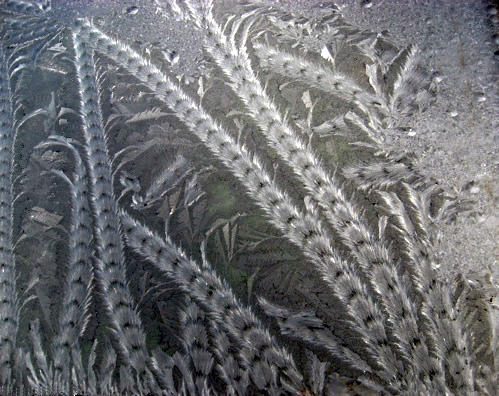
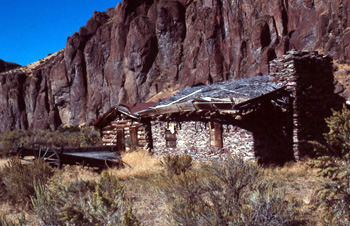

It's late afternoon on a clear, warm, sunny September day. A tiny spider climbs a tall stalk of grass in a subalpine meadow and raises its body into the air, almost standing on its head. From spinnerets on the tip of its abdomen, it ejects a mass of silken threads into the breeze. Suddenly, without visible warning, the spider is jerked off its stalk and born skyward to join other spiders riding the warm afternoon air flowing up the mountainside, all casting their fortunes to the wind. Like their ancestors in centuries past, they float on currents of air from the far corners of the Earth and become the first inhabitants of newly formed South Sea Islands.
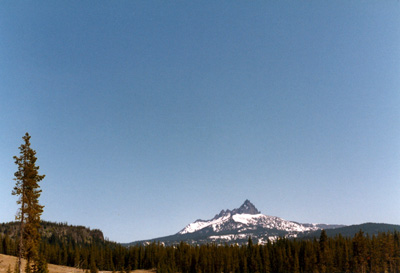
Clean air is one of the primary components of the global commons and thus everyone's birthright.
Spiders are not the only things borne aloft on currents of air. In 1883, Krakatoa, a small Indonesian island between Java and Sumatra, was virtually obliterated by explosive eruptions that sent volcanic ash high enough above the Earth to ride the world's airways for more than a year, affecting the climate by filtering the sun's light. Air also carries the reproductive spores of fungi and the pollen of various trees and grasses. It carries dust and microscopic organisms. And it carries life-giving oxygen and water and death-dealing pollution—the legacy of human society.
WATER: A CAPTIVE OF GRAVITY
Water is the most important commodity from the world's forests. Most of our usable water comes from snows high on forested mountain slopes. When snow melts, the water percolates deep into the soil. It's purified when flowing through soil healthy with Nature's processes. It's poisoned when flowing through soil stripped of Nature's processes and polluted with artificial chemicals. In addition, water, bearing tons of toxic effluents, flows directly into streams, rivers, estuaries, and the open ocean. Water is a captive of gravity, so all the pollutants it accumulates on its downhill journey eventually end up in the oceans, where they accumulate in ever-increasing concentration.
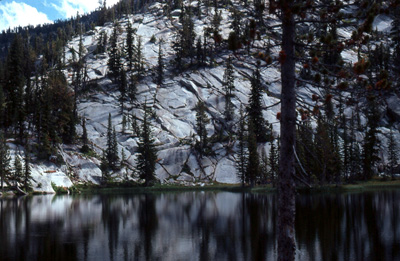
Pure water is one of the primary components of the global commons and thus everyone's birthright.
The above paragraph refers to water that, flowing for a time through the soil, completes its journey to the ocean above ground. There is, however, a belowground analog in subterranean seeps, trickles, and rivulets, which coalesce into streams and rivers that flow from the mountains to the ocean entirely below ground. On reaching their destination, they enter the marine environment through porous soils along the beach, just below the salty surface, or erupt as freshwater springs on the oceanfloor near many of the world's shores, where the fresh water influences the dynamics of the marine ecosystem.
These hidden waterways, like their aboveground counterparts, are conduits that continually deliver pollutants from the land to the oceans of the world. Here, petrochemicals from agricultural fields and tree farms, from urban settings and industrial complexes leach into the deeper terrain of the soil, where they are entrained in stream and river to enter and defile the mother of all waters.
SOIL: THE GREAT PLACENTA
The soil lies between the living (plant and animal) and nonliving components of the landscape, an exchange membrane much like the placenta through which a mother nourishes her child. The soil, derived from rock, is built up by plants that live and die in it. It's also enriched by animals that feed on plants, void their bodily wastes, and eventually die, decay, and return to the soil as organic matter. Soil is by far the most alive and biologically diverse part of any terrestrial ecosystem. In addition, soil organisms are the regulators of most of its processes, which translate into productivity.
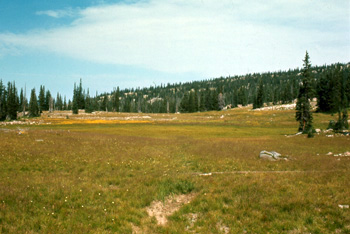
Fertile soil is one of the primary components of the global commons and thus everyone's birthright. A mountain meadow on Buffalo Pass in the Rocky Mountains of Colorado.
Many cultures have emphasized in their religion and philosophy that humans must be trustees of the soil. In his covenant with God, Abraham was instructed: "Defile not therefore the land which ye shall inhabit, wherein I dwell." Confucius saw in the Earth's thin mantle the sustenance of all life and the minerals treasured by human society. And a century later, Aristotle viewed the soil as the central mixing pot of air, fire, and water that formed all things.
In spite of such long-held beliefs, most people cannot grasp them because they're intangible. So we pay little attention to the soil, because it's as common as air and, like air, taken for granted.
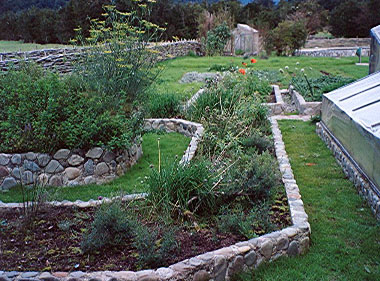
A family garden in southern Chile.
But if you pause and think about it, you may realize that human society is tied to the soil for reasons beyond measurable materialistic wealth. Yet, in the name of short-term profits, we rob the soil of the very organic material necessary to its sustainable fertility. We then use artificial chemicals that not only poison the soil and alter the way its many hidden processes function but also pollute the water flowing through it into the streams, rivers, estuaries, and the oceans of the world.
Soil is the stage on which the entire human drama is enacted. If we continue to destroy the stage on which we depend for life, we will play a progressively ebbing role in a terminal tragedy of human society.
BIODIVERSITY: THE VARIETY OF LIFE
"Biodiversity" refers to the variety of living species and their biological processes. It acts as an ecological insurance policy for the flexibility of future choice in terms of human options for life because every ecosystem adapts in some way to changes in its environment. In turn, the degree of a system's adaptability depends on the richness of its biodiversity, which creates backups that provide alternative functional channels in case of a failure and so retains the system's ability to respond to continual change.
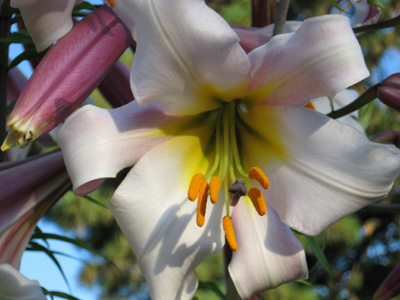
A lilly in my garden.
Each ecosystem contains backups that provide resilience to resist change or to bounce back after disturbance. Biological backups strengthen the ability of an ecosystem to retain its integrity, which means the loss of one or two species is not likely to result in such severe functional disruption as to cause ecosystem collapse because other species can make up for the functional loss.
At some point, however, the loss of one more species will tip the balance and cause an irreversible change that can lower quality and productivity of the system. This point of irreversibility is an unknown biological threshold—we don't know which species' extinction will trigger its effects. That's why it pays to save every species we can.
Species richness is important because each species has a shape and structure that allows certain functions to take place. These functions interact with those of other species to create a viable system through self-reinforcing feedback loops. All biodiversity is ultimately governed by the genetic code that, by replicating species' character traits, builds a certain number of backups into each ecosystem.

A blueracer in the sagebrush steppe of central Oregon.
A stable ecosystem may respond positively to disturbances to which it is adapted, but it also may be vulnerable to the introduction of foreign disturbances to which it's not adapted. The diversity of plants and animals therefore buffers an ecosystem against disturbances from which it cannot recover. When we lose species, we lose not only their combination of structural and functional diversity but also their genetic diversity, which eventually results in complex ecosystems becoming simplified and unable to sustain either themselves or us.
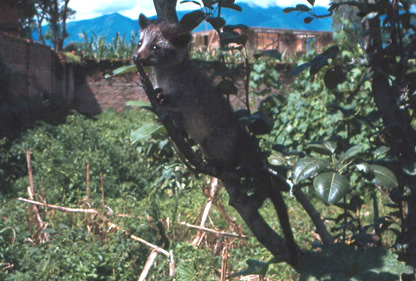
A young palm civet in Katmundu, Nepal.
A forest, for example, is a living entity that completes a cycle of interdependent processes over several centuries—spanning many human generations. And yet with grossly incomplete, shortsighted knowledge, and unquestioning faith in that knowledge, we blithely predict the sustained-yield capability of our tree-plantations far into an unforeseeable future.
Based on these erroneous predictions, we justify clear-cutting the old-growth forest and converting it to a biologically simplified plantation, completely ignoring biodiversity—especially that which sustains the infrastructure of the forest soil. Destroy the soil and the forest ceases to be! Destroy the forest and the soil becomes further impoverished and erodes, which progressively degrades its capacity to store and purify humanity's main source of water.
SUNLIGHT: THE SOURCE OF GLOBAL ENERGY
Sunlight has been worshiped for millennia, and its quality has been taken for granted. Sunlight powers all the Earth's processes. We, in turn, harvest the sun's energy through the fruits and vegetables we eat. But what happens when air pollution—smog—filters sunlight before it reaches the plants? What happens when the ozone shield disappears allowing deadly ultra violet rays to bombard the Earth? What happens when both these events occur simultaneously, as is now happening?
Such human activities as air pollution now directly affect the quality of the sun's light and energy reaching us and virtually all life. Like everything else, the quality of the sun's light is an ecological variable, which we must take into account.
HUMAN POPULATION: A MATTER OF EQUALITY
We've been warned for decades that the human species is overpopulating the Earth, yet our population explodes, and the usable portion of the Earth per individual shrinks as does the allotted proportion of its resources, all of which are finite. We've tried many things to remedy this situation: education, birth control, feeding the hungry, shipping technology to poor nations, and so on. But, in my opinion, we've not addressed the primary cause of overpopulation—the inequality between men and women.

Young women who are responsible for a tree nursery in southern Chile.
Men, who justify their behavior in the name of patriarchal religion, have long dominated women. Through such domination, women are physically forced to produce most of the world's food, yet are allowed to own but an infinitesimal part of the land. And women have had only one way to be uniquely valued—by having babies.
Women who have a good education have fewer children and have them later in life. Why? Because they've found other ways to be valued, despite their continuing abuse by men. I submit, therefore, that if we're serious about controlling the human population, women must have unequivocal access to opportunities to find value. On the surface, this means such things as equal opportunities for education, jobs, and pay. But at its root, it means changing the insufferable attitude of superiority the world's men arrogantly superimpose on women—a difficult, but vital task is human society is to live in sustainable harmony and dignity with the Earth.
CLIMATE: THE GLOBAL ARBITER
Western society has developed an array of technologies on the assumption that they cannot harm the autonomous biosphere that produces the environment needed for life. The day has come, however, when the life system itself is within reach of our technology with its power to disarrange and destroy, a peril no age but ours has faced.
The increased warming is caused by an array of gases in the atmosphere that trap heat radiated outward from the Earth's surface—the "greenhouse effect." Carbon dioxide has to date received the most attention, but other gases are involved as well: water vapor, ozone, nitrous oxide, chlorofluorocarbons (CFC's), and methane.
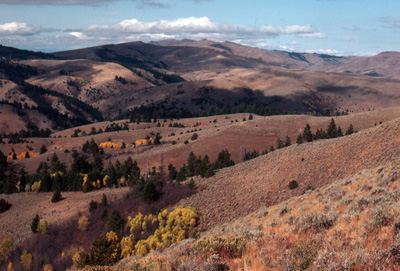
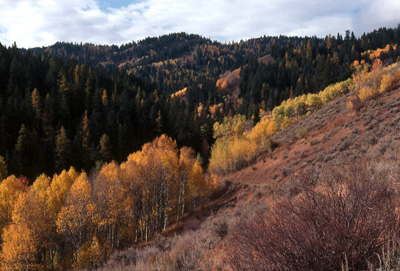
The consensus among most scientists is that global warming, at some unknown intensity, is effectively taking place at an unprecedented rate, as evidenced by the massive melting of the worlds continental glaciers and oceanic ice in the Arctic summer. Further, sea levels are rising as the ice melts and ocean temperatures warm, which causes the water to expand and thus raises sea levels even more. I could go on ad nauseam, but that is unnecessary for those who accept the compounding evidence of global warming and a waste of time for those who choose to hide behind informed denial.
THE KEY TO THE GATES
Directly, humans affect five of the seven foundation stones of social survival: air, soil, water, biodiversity, and population density. We affect the other two—sunlight and climate—indirectly. If, for example, we choose to clean the world's air we will automatically begin cleaning the soil and water because airborne pollutants will no longer poison them. If we then choose to treat the soil in such a way that we can grow what we desire without the use of artificial chemicals and if we stop using the soil as a dumping ground for toxic wastes, the soil can once again filter and purify the water. If we stop dumping waste effluents into the water, the streams, rivers, estuaries, and oceans can again become clean and healthy.
With clean and healthy air, soil, and water, we can also have an atmosphere free of most greenhouse gases and smog, resulting in a more benign—and perhaps predictable—climate in which to live. Then, with the ozone shield repaired, we will again have safe sunlight with which to power the Earth. On a healthy home planet, we can have a high-quality environment for an ecologically sustainable population.
A population in balance with its habitat will reduce demands on the Earth's resources. With reduced competition for resources can come cooperation and coordination that will allow our landscapes to provide the maximum possible biodiversity. Protecting maximum biodiversity translates into the gift of choice, which in turn translates into hope and dignity for future generations.
For discussion's sake, let's add to this scenario the end of wars and their weapons. Such a world, a wonderful place in which to live and raise families, is possible. But it hinges on one thing—clean air, which is the foundation of the "global commons." And every aspect of the commons constitutes the birthright of every human being—indeed of all life on Planet Earth.

Sunset over a canyon in the sagebrush steppe of central Oregon.
If we achieve a world of lasting peace, a balanced and sustainable human population, food in abundance, gender and racial equality, and democratic governance, but we do not clean the air then all is for naught. If we do everything I've outlined—except clean the air—we will still pollute the entire Earth from the blue arc of the heavens to the bottom of the deepest sea in every corner of the globe. Clean air is the absolute "bottom line" for human survival. Without clean air there eventually will be no difference in the way we commit suicide, either directly by nuclear war or indirectly through air pollution. Regardless of our choice, the consequence is the same. We will be the collective authors of our own demise—the "Greek tragedy" of modern society. But there are alternatives, and the choice is ours. To our children, their children, and their childrens' children unto seven generations and beyond we bequeath the consequences.
©Chris Maser 2009. All rights reserved.